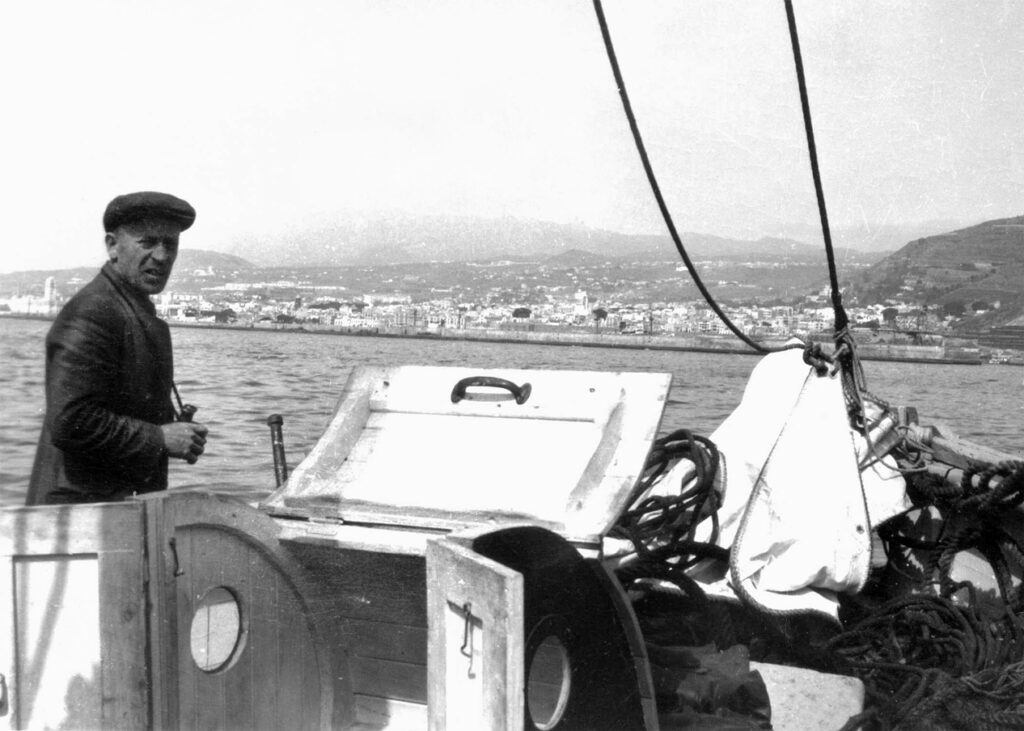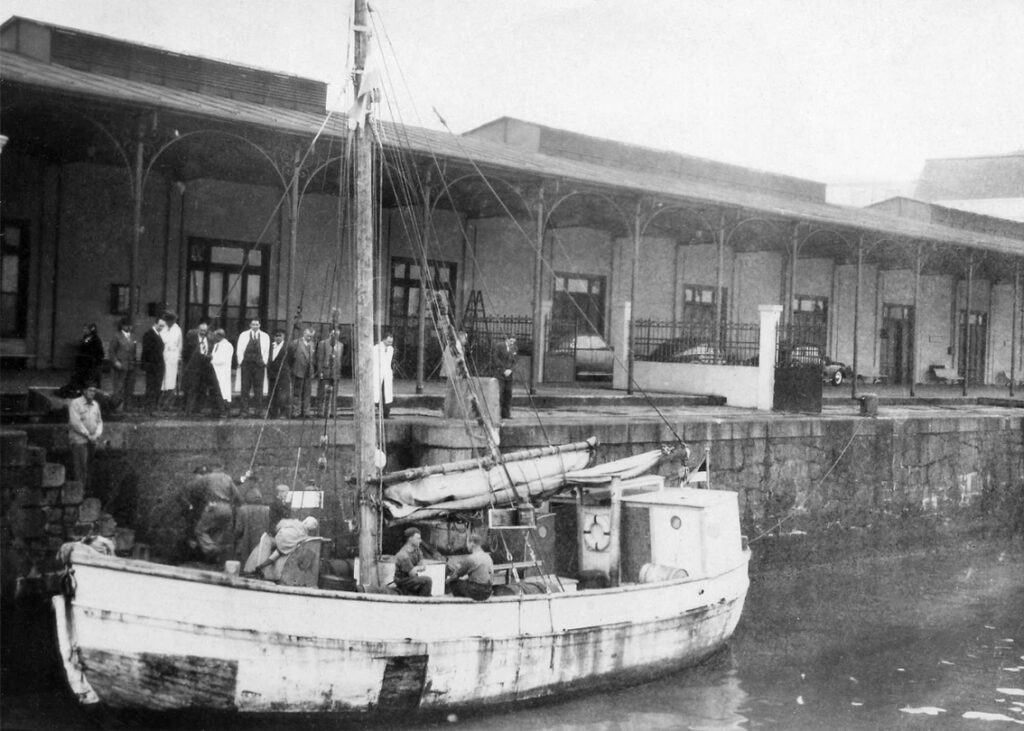Boats

The Snygg before departing Sweden.
snygg
The first group of 12 Estonian refugees from Sweden arrived in Argentina in 1946 on the Snygg. The boat’s arrival in Buenos Aires on September 9 caused a sensation, with the Critica, a national newspaper, publishing a full-page report with photographs and interviews with the refugees.
Plans for the journey began in spring 1946 when a group of Estonian refugees met in Göteborg and shared fears about being extradited to Soviet Estonia. They decided to leave Sweden and chose Australia as their destination. Three men—Johannes Bruus, Alfred Sillandi, and Rudolf Raud—pooled their money and bought a 40-foot-long (12 meters) wooden fishing boat for 3,000 Swedish kronor. The boat had a sail and a 40 HP semi-diesel engine. To navigate, there was a magnetic compass, a sun-worn sextant, and a small collection of nautical charts.
The boat’s captain, Mihkel Laks, was an experienced seaman who was working in a battery factory in Stockholm. He had graduated from the Tallinn Maritime School’s class of long-distance skippers in 1929, then sailed commercially and taught at the school until he and his wife escaped to Sweden in 1944.
The Snygg was refurbished for the long ocean journey in a small harbor near Göteborg and on June 9, 1946, it set sail under the flag of a Swedish yacht club.

Captain Mihkel Laks.
After leaving Sweden, the boat hit rough weather in the Skagerrak and was forced to seek shelter in Norway. But the crew didn’t linger as three Soviet minesweepers were nearby, and they feared being kidnapped. The Snygg crossed the North Sea, the English Channel, the Bay of Biscay, and then stopped at Santa de Tenerife in the Canary Islands so the crew could buy food.
Jaan Rohtla, who spoke Spanish, was able to communicate with the local immigration officials and with the help of the mayor, was able to obtain the necessary supplies to continue the journey to Brazil a week later. During the long journey the refugees ran out of food, so they caught flying fish landing on the deck by hitting them with a paddle.

The Snygg in Buenos Aires, Argentina.
Estonians already living in Brazil warmly welcomed the refugees when they arrived in Rio de Janeiro. Two weeks later, they set off again, with plans to sail to Australia. However, the Snygg ran into the Santa Rossa cyclone and was forced to turn into an offshore port. The boat arrived in Buenos Aires, Argentina, on September 9, 1946—three months after leaving Sweden.
Before entering the harbor, the crew exchanged the Swedish yacht club flag they had used during the journey for a handmade Estonian flag. The passengers had sewed together black cloth from Rudolf Raud’s jacket, a white stripe from Johannes Bruus’s pillowcase, and blue cloth from Liidia Laks’s blouse.

Welcoming the refugees to Buenos Aires. Captain Laks is seated on the hold hatch.
The press in Buenos Aires hailed Captain Laks as a hero and wrote stories praising the refugees. Critica issued a public appeal, calling for the government to allow the Estonians to stay. They didn’t have to wait long. On October 6, Välis-Eesti reported that President Juan Perón had personally ordered approval for the 12 Estonians to remain in Argentina. Since the boat’s engine was damaged and the refugees had run out of money, they did not continue to Australia.
Known crew and passengers:
- Captain Mihkel Laks and Liidia Elfriide Laks
- Johannes Bruus and Lorelie (Loora), his girlfriend and future wife
- Alfred Sillandi
- Rudolf Raud
- Uno and Laine Marmei and their sons Villu, 9, and Matti, 5
- Karl Kä(a)rsna
- Jaan Rohtla
Photographs reproduced with permission from the Estonian Maritime Museum.
